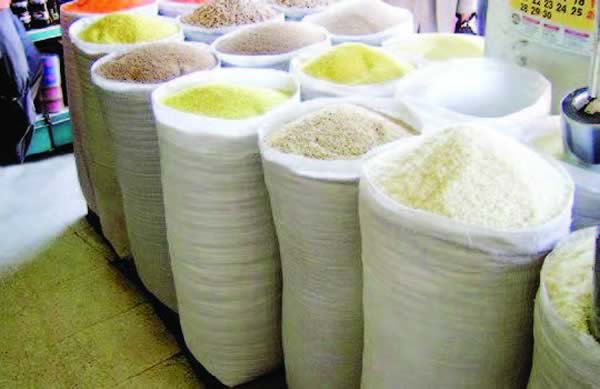The price of food items in the country recorded a significant increase in the first quarter of 202o, a report by SBM Intelligence has shown.
The report, which is called the Jollof Index, monitors food inflation by tracking the change in the price of food items.
The index considers nine items across 13 markets in the country.
The commodities that made up the index are rice, garri, groundnut oil, chicken/turkey, beef, seasoning, tomatoes, pepper, onion and salt.
Advertisement
According to the report, the federal government’s decision to close the country’s land borders increased the cost of legal trade which translated to high prices of staple commodities.
As a result, it said more Nigerians switched to locally produced rice for their meals.
“By March 2020, the price of Nigerian rice in most markets gad risen to the pre-August 2019 levels of imported rice, but crucially, there has not been a commensurate increase in the quality of the Nigerian rice,” the report read.
Advertisement
Between August 2016 and March 2020, the price of a 50kg bag of local rice rose from N11,500 to N18,500 while a 50kg bag of imported rice increased from N18,500 t0 N27,500.
The cost of a derica of rice (imported) rose from N450 to N1000; and the cost of a derica of rice (local) increased from N300 to N750.
These prices were recorded in markets in Oyingbo and Island market in Lagos; Awka and Onitsha market in Anambra; and Nyanya market in Abuja.
In the tail of the Q1, the COVID-19 pandemic induced panic buying by the Nigerian consumers on garri such as a 100% increase in price was recorded in Anambra; 122% increase in Ibadan; and 114% increase in Port-Harcourt.
Advertisement
The Jollof Index describes the coronavirus pandemic represents the single ‘disruptive determinant’ affecting food prices in the country.
It also states that “the lockdown in Lagos, Ogun state and Abuja has already disrupted well-established supply chains which have led to an increase in transportation costs and a reordering of supply chains”.
It also advises consumers to prepare for even more price increases.
Advertisement
Add a comment






